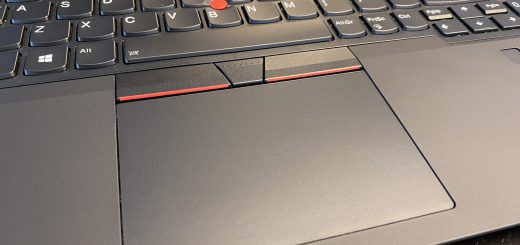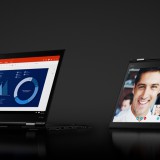ThinkPad X1 Yoga: 4K video playback performance
I examined 4K video playback on the Yoga 3 Pro and the YOGA 900 before. I found that when using Internet Explorer or Edge, the computer properly uses hardware decoding and the CPU is not stressed that much or much at all. And then in Google Chrome, it somehow uses software decoding (either partially or fully, I do not know). The end results were not too great.
I decided to test the same thing on the ThinkPad X1 Yoga, and found similar results.
How did 4K playback go on the X1 Yoga?
I loaded up YouTube and looked for 4K videos (I actually have quite a few of these bookmarked). And then I checked the CPU usage in task manager. The results? Here they are. I also tested with FHD videos and 1440p videos which use the native resolution of the X1 Yoga.
- 1080p (FHD) video playback (upscaled to X1 Yoga screen)
- Edge: 2-3%
- Google Chrome: 9-15%
- 1440p video playback (uses the native resolution of the X1 Yoga display)
- Edge: 2-4%
- Google Chrome: 20-30%
- 2160p video playback (scaled after decompression)
- Edge: 5-8%
- Google Chrome: 30-40%
So the results are not as bad as before: On the Yoga 3 Pro for example with Chrome you got sluggish and skipping 4K video with lots of dropped frames, while IE played in back flawlessly. On the X1 Yoga as you can see even with Chrome you get proper playback, so it doesn’t drop frames and the video looks great.
Most of the time Chrome plays back the video nicely: it is fluid, and will not drop frames. But if you do anything else on the computer, then Chrome will drop a frame here or there. And then after a short while the cooling fan starts up while the X1 Yoga produces heat and noise. The CPU usage also means battery life will be less.
(I included Full HD videos just to show that while the difference is smaller, it still exists. Also, the CPU fans do kick in also in FullHD playback, although not all the time, and not as loud as with 4K playback)
What should I watch videos with then?
Watching 4K videos on Edge (or Internet Explorer) will utilize the GPU / hardware decoding, and so you can enjoy the video on the X1 Yoga completely silent, while also not using battery that much.
Watching videos with smaller resolutions will not bring out the difference so much because there is less to do while decoding, but there still is a difference when using Edge/IE. FHD video playback will also benefit from using Edge/IE.
Not to mention that battery life will be affected whenever the CPU is used more. More CPU usage means less runtime on battery.
If you watch streaming services using your browser (HBO, Netflix, etc) make sure you use IE or Edge for maximum enjoyment (long battery and silent operation)!

















The problem goes to the used codecs of both browsers. Edge defaults to H. 264 and that’s supported by the Intel hardware acceleration.
Chrome uses by default their own VP.8 or 9 codec. Chrome does not allow hardware acceleration of these codecs, maybe it does not even exist in actual Intel CPUs (or their integrated GPUs).
I tried the chrome extension h264fy, which forces Chrome to use H. 264 inside YouTube and it works! Hardware Acceleration is used and my Yoga 900 plays it with ease.